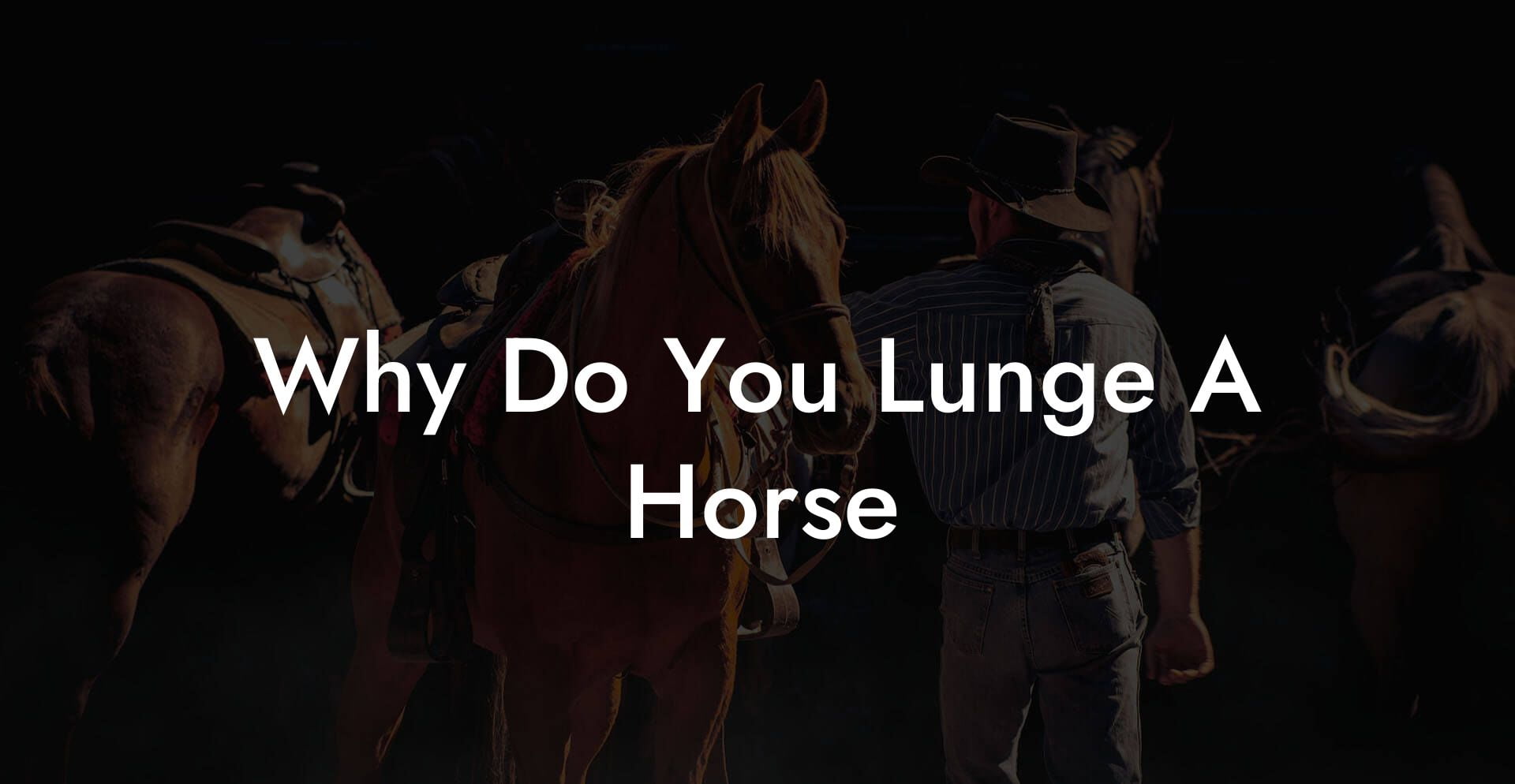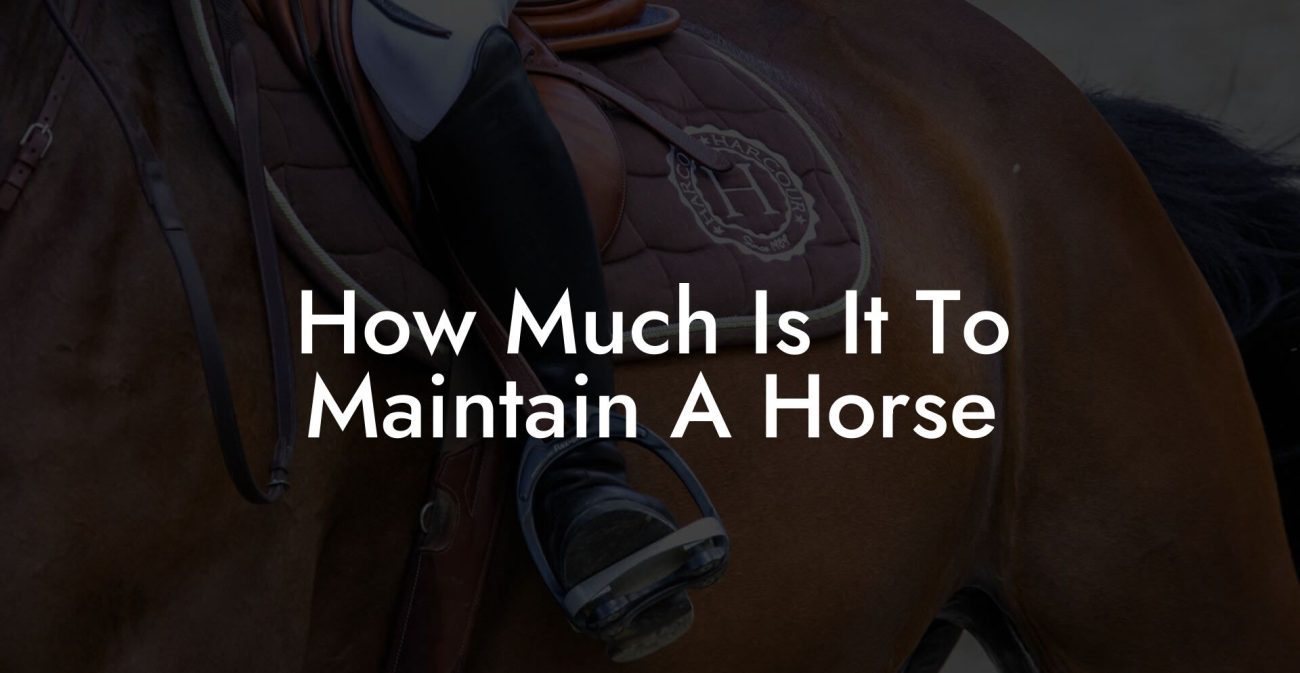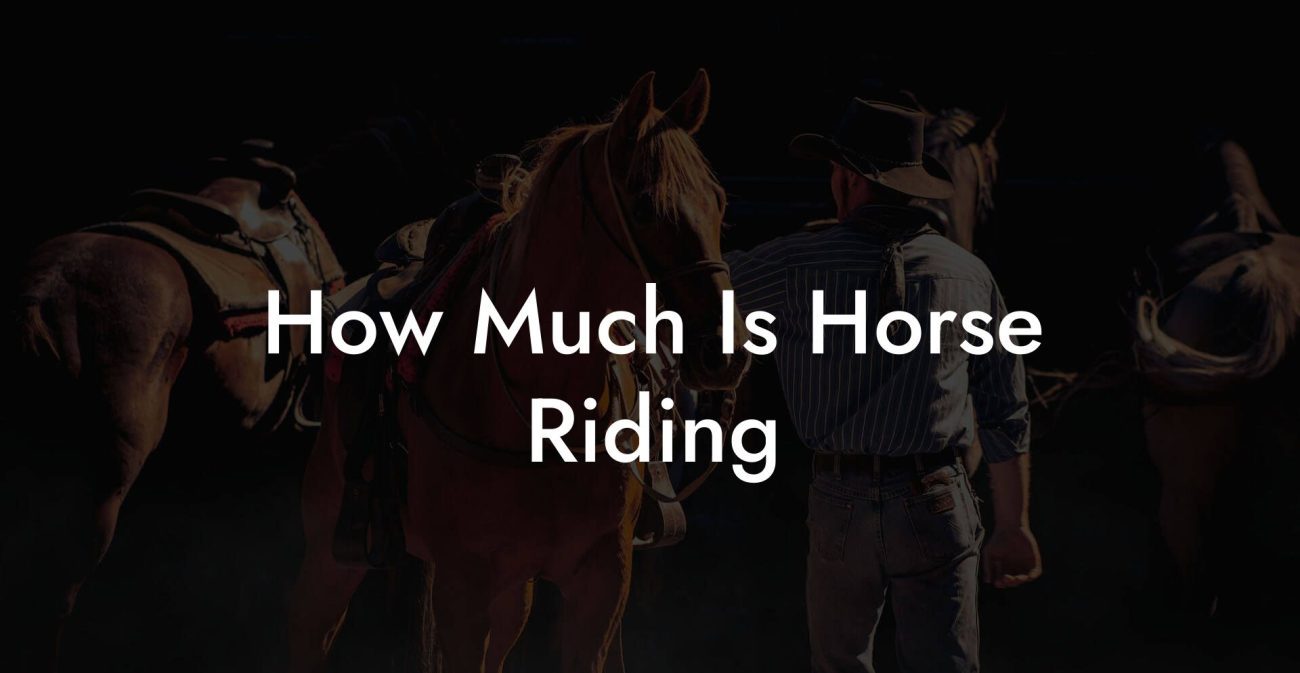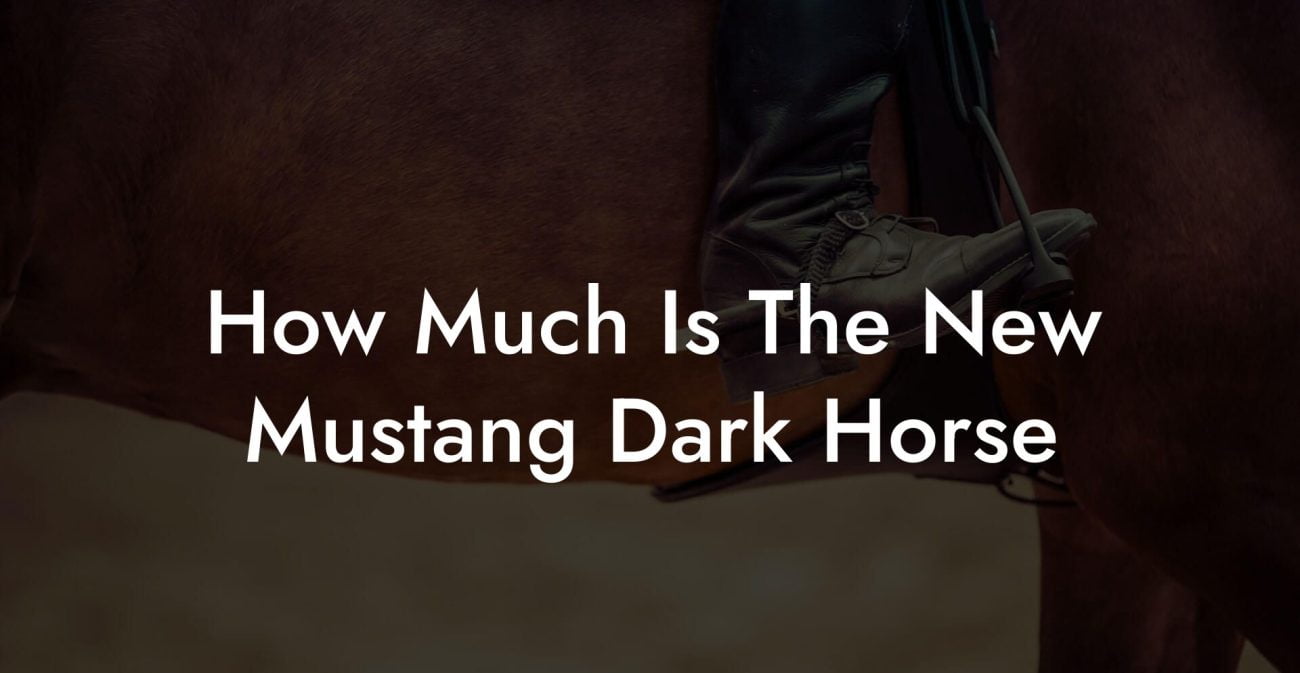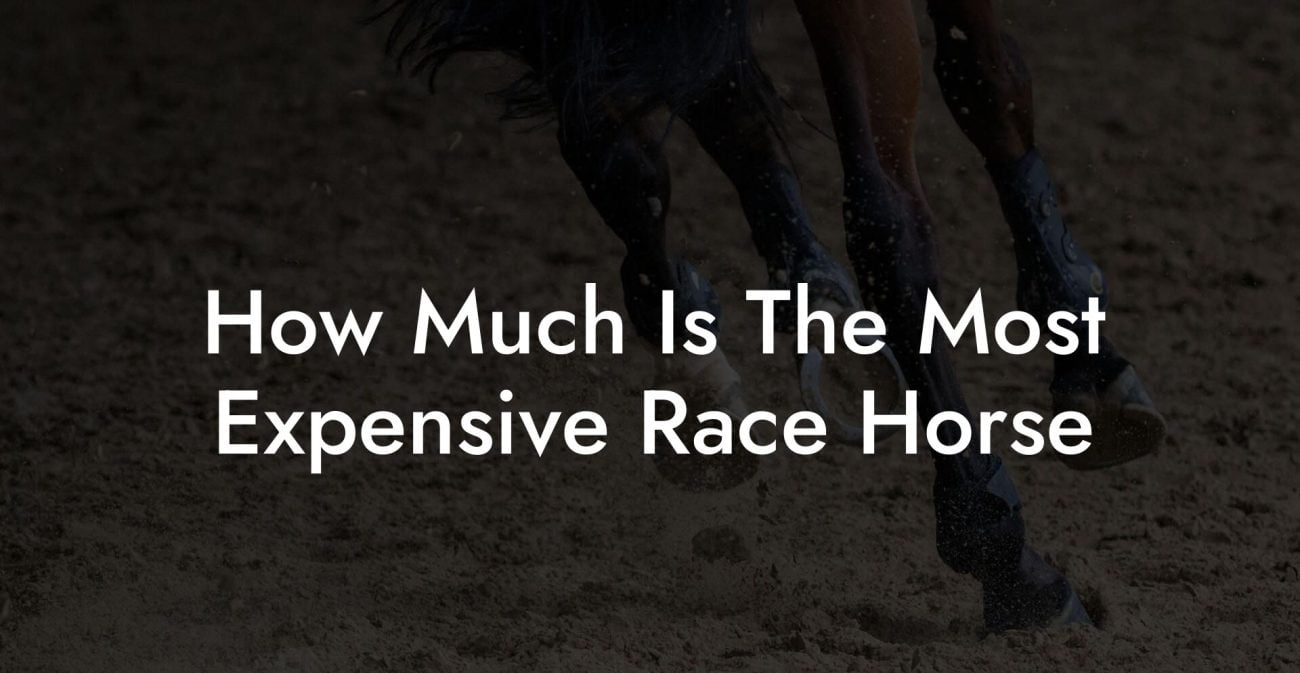Ever wondered why lunging a horse isn’t just a quirky equestrian ritual but rather a full-on training revolution? Picture this: your majestic steed gracefully circling in a spacious arena, the rhythmic pace of its movements echoing the beat of a modern playlist, this isn’t just exercise; it’s a holistic warm-up, a workout that boosts balance, stamina, and mental focus all at once. Lunging, when done right, is the secret sauce behind a well-trained horse that’s both a better performer and a happier companion. And no, it’s not just about fancy lunge lines and showy circular patterns, it’s a gateway to understanding your horse’s mindset, agility, and those nuanced signals that speak volumes about its mood and health.
Quick Links to Useful Sections
- Diving Deep: What Does It Mean to Lunge a Horse?
- The Multifaceted Benefits of Lunging a Horse
- Enhanced Physical Conditioning
- Improved Behavior and Focus
- Injury Prevention and Rehabilitation
- Prepping for Advanced Training
- Enhanced Communication Between Horse and Handler
- The Science and Art Behind Lunging Techniques
- Biomechanics at Play
- Psychological Impact
- Modern Technology Integrations
- Essential equipment for Effective Lunging
- The Lunge Line
- Cavessons and Lead Ropes
- The Lunge Whip
- Safety Gear and Arena Essentials
- Safety First: Best Practices When Lunging a Horse
- Know Your Environment
- Gradual Progression
- Consistent Cues and Communication
- Mind the Equipment
- Know When to Stop
- Common Pitfalls and How to Dodge Them
- Inconsistent Driving Cues
- Too Much Pressure, Too Soon
- Poorly Maintained Equipment
- Not Reading the Horse’s Mood
- Case Studies: Real-Life Transformations Through Lunging
- Case Study 1: The Anxious Stallion Turned Confident Companion
- Case Study 2: The Recuperative Journey of a Seasoned Mare
- Case Study 3: Innovative Training with Tech-Savvy Riders
- Advanced Lunging Techniques: Pushing the Boundaries
- Variable Pace and Tempo Control
- Incorporating Obstacles and Directional Changes
- Using Technology to Fine-Tune Performance
- Resources and Community Support: Your Next Steps
- Crafting Your Perfect Lunging Routine
- Step 1: Start With a Comprehensive Assessment
- Step 2: Define Clear Goals
- Step 3: Lay Out a Structured Plan
- Step 4: Monitor and Adjust
- Step 5: Infuse Fun and Flexibility
- FAQ: Everything You Need to Know About Lunging a Horse
- Embracing the Journey: Your Key to Confident Equine Care
Diving Deep: What Does It Mean to Lunge a Horse?
Lunging, sometimes spelled “lungeing,” is a training exercise where a horse is worked from the ground on a long line or rope, called a lunge line, to move in large circles. This ancient technique isn’t just for show, it’s a core component of equine fitness programs around the globe. For Gen Z and millennial riders who crave a mix of tradition and innovation in horse care, lunging is a brilliant fusion of old-school training and modern-day equestrian science.
Essentially, lunging is like giving your horse a dynamic warm-up session before more involved riding or as a standalone workout. The process helps the horse develop balance, flexibility, and a heightened ability to respond to cues, all while enjoying a change of pace from routine ground work. And because it’s a low-impact, high-benefit exercise, it’s a game changer in preventing injuries and enhancing long-term physical well-being.
When you lunge a horse, you’re doing more than just herding it in circles; you’re training its mind and body to align effectively. The discipline behind lunging creates better posture, steadier gaits, and increases the overall strength of the horse’s core muscles. It’s like a cardio-and-strength workout rolled into one, with bonus points for improved mental focus.
The Multifaceted Benefits of Lunging a Horse
So, why do you lunge a horse? The benefits span far beyond simple exercise. Let’s break down the impressive perks that make lunging an indispensable tool in the equine care kit:
Enhanced Physical Conditioning
Regular lunging sessions develop the horse’s muscles, especially the core, back, and leg muscles. It’s like having a personal trainer in the field, without the need for a gym membership! Circling at various speeds helps increase flexibility, balance, and overall coordination.
Improved Behavior and Focus
A lunge session isn’t just about physical benefits; it’s also a mental workout. When a horse is encouraged to move freely in a controlled circle, it learns to respond to cues, relax its mind, and focus on the task at hand. This technique is particularly effective for horses that may display anxiety or behavioral challenges when ridden.
Injury Prevention and Rehabilitation
If your horse has a minor injury or is recovering from a setback, lunging is a gentle yet effective way to rebuild strength and increase circulation without the stress of full riding sessions. Veterinarians and equine therapists often recommend lunging as part of a rehabilitation program.
Prepping for Advanced Training
Before a horse transitions to more complex riding exercises, lunging helps build the foundational strength and balance needed to handle higher-level tasks. Think of it as the warm-up before the main event in a high-intensity competition.
Enhanced Communication Between Horse and Handler
One of the coolest aspects of lunging is the non-verbal communication that develops between you and your horse. The practice allows you to read subtle body language cues and adjust your techniques accordingly. For riders who love hands-on interaction and fostering trust, lunging is a golden opportunity to bond.
The Science and Art Behind Lunging Techniques
While lunging may appear simple, a horse in a circle, following your lead, it actually integrates a blend of biomechanics, psychology, and technology. Modern lunging techniques emphasize proper form, safety, and a deep understanding of equine physiology.
Biomechanics at Play
Horses are built for movement, with their anatomies designed to handle a variety of physical challenges. Lunging allows the animal to work on muscle symmetry and develop a well-rounded set of muscles. The circular motion encourages the horse to balance its weight evenly, promoting symmetrical development of the spine and limbs.
In technical terms, lunging can help improve coordination between the horse’s hindquarters and forehand, ensuring a fluid, connected movement. This is especially important for performance horses that are expected to perform complex maneuvers during competitions.
Psychological Impact
Beyond the physical benefits, lunging plays a critical role in a horse’s mental conditioning. The activity can help reduce anxiety, build confidence, and instill a sense of autonomy. A horse that feels free yet secure in its movements is more likely to become an even-tempered and responsive partner.
For horses that have experienced stressful events, ranging from overly harsh training sessions to rough handling, lunging offers a chance to reset mentally and physically. The exercise is both calming and stimulating, creating a perfect balance between relaxation and engagement.
Modern Technology Integrations
Today’s equestrians are not shy about blending traditional methods with modern innovations. Digital tools such as wearable devices for horses and mobile apps that track workout metrics are becoming the norm on the lunging arena. These technologies help monitor heart rate, gait symmetry, and overall fitness levels, ensuring that every lunging session is optimized for the horse’s unique needs.
From LED markers on the lunging whip to smartphone-controlled lunge line reels, technology has carved a niche in this age-old practice, making it more effective and engaging for both the horse and the handler.
Essential equipment for Effective Lunging
Having the right gear is crucial when lunging a horse, and it doesn’t have to break the bank. Here’s your guide to the essential equipment that every modern equestrian should have:
The Lunge Line
The lunge line is the centerpiece of the exercise. Typically made of durable, smooth material (like nylon or leather), it’s designed to ensure that the horse can move freely without getting tangled or injured. Look for lengths between 25 to 50 feet, which allow for ample movement space in various sized arenas.
For those with a tech twist in mind, some lunge lines now come integrated with tracking devices or reflective stitching for low-light visibility, perfect for our millennial riders who love a little gadgetry in their routine!
Cavessons and Lead Ropes
A cavesson is another piece of equipment that plays a pivotal role in lunging. It provides a soft, padded contact point for the lunge line to attach, ensuring that the horse’s head and neck are supported without causing discomfort. When paired with a sturdy lead rope, the cavesson helps maintain consistent pressure and communication throughout the workout.
Modern variations even offer adjustable fits, catering to different neck sizes and ensuring maximum comfort during extended lunging sessions.
The Lunge Whip
Don’t worry, this isn’t a cowboy movie! The lunge whip is a tool designed for subtle guidance and communication, not for harsh discipline. Its lightweight design makes it perfect for directing a horse’s pace and maintaining focus during the exercise.
For many equestrians today, choosing a whip means balancing tradition with sensitivity; it should never be used to scare, but rather to reinforce verbal and body cues in a kind, clear manner.
Safety Gear and Arena Essentials
Safety is paramount. Ensure that your training area is free of hazards like loose debris or uneven footing. Depending on your setup, you might also consider investing in portable fencing, reflective markers, or even weatherproof mats for those rainy-day sessions.
For riders who enjoy mixing outdoor fun and safety, modern arenas sometimes incorporate smart lighting and adjustable knock-downs, making the environment both secure and adaptable.
Safety First: Best Practices When Lunging a Horse
While lunging is loaded with benefits, safety always takes center stage. A misstep could cost more than just a ruined session, it could lead to injuries for both the horse and handler. Here are essential best practices to ensure every session is both productive and safe:
Know Your Environment
Always choose a flat, open space with minimal distractions. Whether it’s an arena, a round pen, or a quiet pasture, the space should be free from obstacles and hazards. This not only protects your horse but also helps it focus during the exercise.
Gradual Progression
Never push your horse into a strenuous workout without proper warm-up. Start slow with basic circles, gradually increasing volume and intensity over time. This progressive training approach helps condition the horse safely and minimizes the risk of injury.
Consistent Cues and Communication
Use clear and consistent verbal commands and body language. Horses are intuitive creatures, they pick up on even the smallest shifts in your tone or gesture. Consistency builds trust and ensures the horse can accurately interpret your signals.
Mind the Equipment
Regularly inspect your gear, lunge lines, cavessons, and whips, for wear and tear. Faulty equipment is not only ineffective but dangerous. Replace any worn-out parts immediately to maintain a safe training environment.
Know When to Stop
Always be attuned to your horse’s body language. If you notice signs of fatigue, stress, or pain, it’s time to call it a day. A well-rested, happy horse will always perform better than one that’s pushed past its limits.
By following these safety tips, you create a nurturing environment for your horse, one where training is both fun and injury-free.
Common Pitfalls and How to Dodge Them
Like any training method, lunging comes with its own set of challenges. Whether you’re a newbie or a seasoned equestrian, being aware of common pitfalls can save you time, energy, and those inevitable “oops” moments.
Inconsistent Driving Cues
One of the most frequent errors is using mixed signals. Whether it’s an inconsistent tone or a mismatch between your verbal and body language, confusing your horse can undo all your hard work. The solution? Develop a clear cue system and stick to it religiously.
Too Much Pressure, Too Soon
It's tempting to ramp up intensity right from the start, but forcing a strenuous session can lead to resistance or even injuries. Patience is key! Gradually introduce faster circles, more sudden stops, and directional changes only once your horse is comfortable with the basics.
Poorly Maintained Equipment
A fraying lunge line or an ill-fitting cavesson can turn a smooth session into a chaotic ordeal. Routine inspections and timely replacements are non-negotiable. Think of your gear as your training partner, it deserves a little TLC!
Not Reading the Horse’s Mood
Horses are masters of subtle expression. A slight ear twitch, a shift in posture, or a barely noticeable change in gait can signal discomfort or distraction. Stay observant and adjust your technique accordingly. Remember, a happy horse is the best training partner you could ask for.
Overcoming these common pitfalls isn’t about perfection, it’s about learning and adapting. The more you attune yourself to your horse’s signals and refine your technique, the smoother your lunging sessions will be.
Case Studies: Real-Life Transformations Through Lunging
Let’s get real: sometimes stats and theories aren’t enough. The transformative power of lunging is best understood through real-life success stories that highlight how this dynamic exercise revitalized equine performance.
Case Study 1: The Anxious Stallion Turned Confident Companion
Meet Rocket, a once-skittish stallion who struggled with anxiety during training sessions. His rider, Maya, a spirited millennial with a love for both tech and tradition, decided to incorporate regular lunging sessions to help Rocket build confidence and improve his responsiveness. With a carefully designed routine that started with slow, deliberate circles and gradually ramped up with directional changes and controlled stops, Rocket transformed. Over several months of consistent practice, he demonstrated enhanced focus, improved balance, and a newfound willingness to engage with more complex training exercises.
Case Study 2: The Recuperative Journey of a Seasoned Mare
Luna, a battle-scarred mare recovering from a minor injury, was introduced to lunging as part of her rehabilitation. Her caretaker, Jordan, who blends a love for equestrian sports with a modern mindfulness practice, implemented a routine that emphasized gentle, healing movements over sheer intensity. Through thoughtful adjustments, Luna reclaimed her strength and regained her playful spirit. The case highlights how lunging can serve as a bridge between recovery and peak performance without overburdening the animal.
Case Study 3: Innovative Training with Tech-Savvy Riders
In today’s digital age, technology meets tradition in unexpected ways. Casey, a young rider armed with a smartphone and an arsenal of fitness apps, integrated modern tracking tools into his lunging routine. By monitoring metrics like heart rate, stride symmetry, and even GPS data from his lunge line, Casey was able to fine-tune his horse Bella’s performance in real time. The results? Improved physical fitness, enhanced communication between rider and horse, and an overall training experience that felt as innovative as it was effective.
These case studies aren’t just stories, they are testaments to the transformative power of lunging when combined with passion, precision, and a modern outlook on traditional equine care.
Advanced Lunging Techniques: Pushing the Boundaries
Once you’ve mastered the basics, it’s time to elevate the practice with advanced lunging techniques. Embracing these innovative methods can further enhance your horse’s training regimen and deepen the bond between you and your equine friend.
Variable Pace and Tempo Control
Advanced lunging isn’t just about maintaining a steady pace, it’s about mixing things up. Varying your speed and incorporating sudden stops or speed bursts not only keep your horse alert but also improve its reflexes and responsiveness to subtle cues. This technique is especially useful for preparing your horse for high-stakes competitive scenarios where quick reactions count.
Incorporating Obstacles and Directional Changes
For an added challenge, consider integrating obstacles or incorporating changes in direction mid-session. This not only simulates real-world events but also forces your horse to adapt to different movement patterns, sharpening its agility and balance. It’s like playing an equine version of an obstacle course, both fun and seriously effective!
Using Technology to Fine-Tune Performance
Leverage technology by using apps and wearable sensors that provide detailed feedback on your horse’s performance. Metrics such as stride length, recovery time, and gait analysis empower you to adjust your training regimen for optimal results. The blend of real-time data with traditional training methods offers a holistic approach that resonates with today’s digital-savvy riders.
Advanced techniques like these not only hone your horse’s skills but also challenge you to become a more intuitive and adaptive trainer. It’s a win-win situation that combines fun, fitness, and forward-thinking innovation.
Resources and Community Support: Your Next Steps
Whether you’re a newcomer to the world of lunging or a seasoned veteran looking to refine your methods, you’re not alone in this journey. The equestrian community is rife with resources, forums, and workshops tailored for modern riders who value both tradition and technology. Consider joining local equestrian clubs, online communities, or even attending clinics run by renowned trainers who are at the forefront of integrating modern techniques with time-tested practices.
Online platforms such as dedicated YouTube channels, Instagram pages, and TikTok accounts offer bite-sized tips and creative tutorials to keep your routine fresh and engaging. Beyond digital resources, many local stables offer workshops that dive deep into the nuances of lunging, from proper equipment handling to advanced coaching techniques.
Embracing community support not only broadens your understanding of equine care but also connects you with fellow enthusiasts passionate about modern, innovative approaches to training. With the right guidance and a supportive network, you can transform your lunging sessions into powerful, growth-oriented experiences for both you and your horse.
Crafting Your Perfect Lunging Routine
The art of lunging a horse is both a science and a creative pursuit. Crafting your perfect routine requires patience, experimentation, and a willingness to adapt. Here’s a streamlined guide to help you design a customized lunging regimen that speaks directly to your horse’s unique strengths and needs:
Step 1: Start With a Comprehensive Assessment
Just as you’d perform a full body check-up at your favorite modern spa, begin by evaluating your horse’s physical condition, behavioral tendencies, and overall fitness. Consult with trusted trainers or equine therapists if needed.
Step 2: Define Clear Goals
What do you want to achieve? Whether it’s improving stamina, correcting balance, or simply providing a fun, engaging workout, setting clear goals will keep you and your horse motivated.
Step 3: Lay Out a Structured Plan
Create a weekly schedule that progressively builds intensity over time. Integrate warm-up circles, intermittent speed bursts, and cool-down periods to ensure a full spectrum of exercise.
Step 4: Monitor and Adjust
Use tech tools or simply keep a training journal to track your progress. Observing changes in your horse’s gait, responsiveness, and energy levels will help you fine-tune your approach.
Step 5: Infuse Fun and Flexibility
Remember, riding and training should be fun, not just another chore on your to-do list. Mix up your sessions with new music, creative obstacles, or even friendly competitions with other riders to keep the momentum going.
With a solid, flexible routine in place, you’re setting the stage for a long-term relationship built on trust, mutual respect, and continuous improvement.
FAQ: Everything You Need to Know About Lunging a Horse
Below are some frequently asked questions that tackle common queries about lunging, why it’s beneficial, and how to do it effectively, all in a language that’s accessible and practical.
1. What is the main purpose of lunging a horse?
Lunging primarily serves as a warm-up and training exercise. It improves muscle tone, balance, and responsiveness while also providing a form of mental stimulation and behavioral conditioning for your horse.
2. How often should I lunge my horse?
The frequency of lunging depends on your horse’s fitness, training goals, and overall health. For most horses, incorporating lunging sessions two to three times per week is effective, though always tailor the routine to your horse’s unique needs.
3. Can lunging help with a horse’s rehabilitation?
Absolutely. For horses recovering from minor injuries, lunging provides a low-impact way to gradually rebuild strength and improve circulation, accelerating the rehabilitation process under professional guidance.
4. What equipment is essential for proper lunging?
The basic gear includes a suitable lunge line, a well-fitting cavesson, a lightweight lunge whip for communication, and a safe training area. Regular maintenance of your equipment ensures both safety and effectiveness.
5. Is lunging only for horses that are difficult to train?
Not at all. While lunging can be a training tool for challenging horses, it also benefits well-mannered horses by promoting overall fitness, focus, and muscular balance.
6. How do modern technologies enhance the lunging experience?
With apps and wearable devices, you can track important metrics like heart rate and stride patterns, making it easier to adjust your training plan in real time and ensure the exercise is perfectly tuned to your horse’s needs.
7. Can beginners lunge a horse safely?
Yes, provided you educate yourself on the best practices, use the right equipment, and ideally get some hands-on guidance from experienced trainers. Borrowing tips from trusted online resources or joining a local equestrian club can make a big difference.
Embracing the Journey: Your Key to Confident Equine Care
Lunging isn’t just another training tool, it's a paradigm shift in how you connect with and care for your horse. Whether you’re a first-time rider or a seasoned equestrian, stepping into the lunge arena opens up opportunities for physical transformation and deeper bonds between horse and human.
By integrating innovative techniques, modern technology, and time-tested tradition, lunging can redefine your training routine and elevate your horse’s performance and well-being. It’s a practice that nourishes the body, calms the mind, and prepares your equine partner for the challenges and joys of everyday life.
Every lunge circle, every subtle cue exchange, and every encouraging word reinforces a journey of trust, mutual respect, and continuous improvement. With the right mindset and a willingness to learn, you can transform lunging from a routine exercise into a soulful, empowering experience.
The journey toward confident equine care begins here. Explore, experiment, and let your creativity flow, the art of lunging a horse is as much about innovation as it is about tradition. So, grab your lunge line, rally your gear, and step into the arena with the excitement of knowing that every circle is a step toward a healthier, happier, and more connected partnership with your horse.

